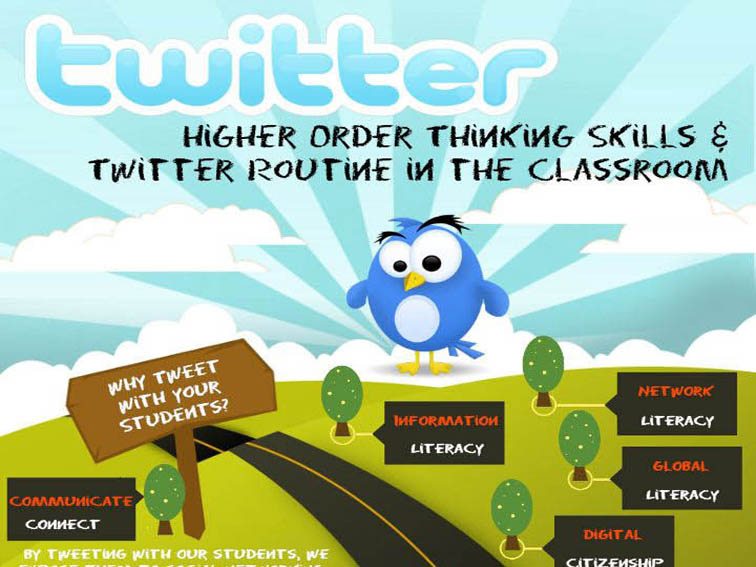
How To Establish A Twitter Routine In Your Classroom
by TeachThought Staff
Last year, we took a shot at understanding how twitter could be used across a range of cognitive actions which yielded the twitter spectrum.
langwitches.org has done something similar–albeit a bit broader in nature. In the following graphic, they start with the idea of why a teacher should tweet with students (literacy, citizenship, etc.), then move on to the idea of a ‘Twitter routine’ which helpfully offers some ideas for introducing younger students to twitter.
4 Actions Young Students Can Take On Twitter
1. Read
2. RT
3. Answer Questions
4. Add Value
In this way, the graphic works to clarify why teachers should connect with students on Twitter, then offers simple actions to get started together, and finishes up with a quick look at higher-order thinking skills.
By merging the functions of Twitter with Bloom’s Taxonomy, from responding to short, close-ended questions, to practicing digital citizenship, to participating in backchannel discussions about books, hesitant teachers may see the “cognitive value” of using the social media platform, while those teachers already on board can see some early ideas for making the most of student interaction there.
If you appreciate the graphic, let her know on Twitter. She’s a great follow.
Update: The previous version of this graphic had a typo, but through the miracle of digital technology, that typo has been corrected. Breathe easy!

Establishing A Twitter Routine In Your Classroom; graphic attribution langwitches.org